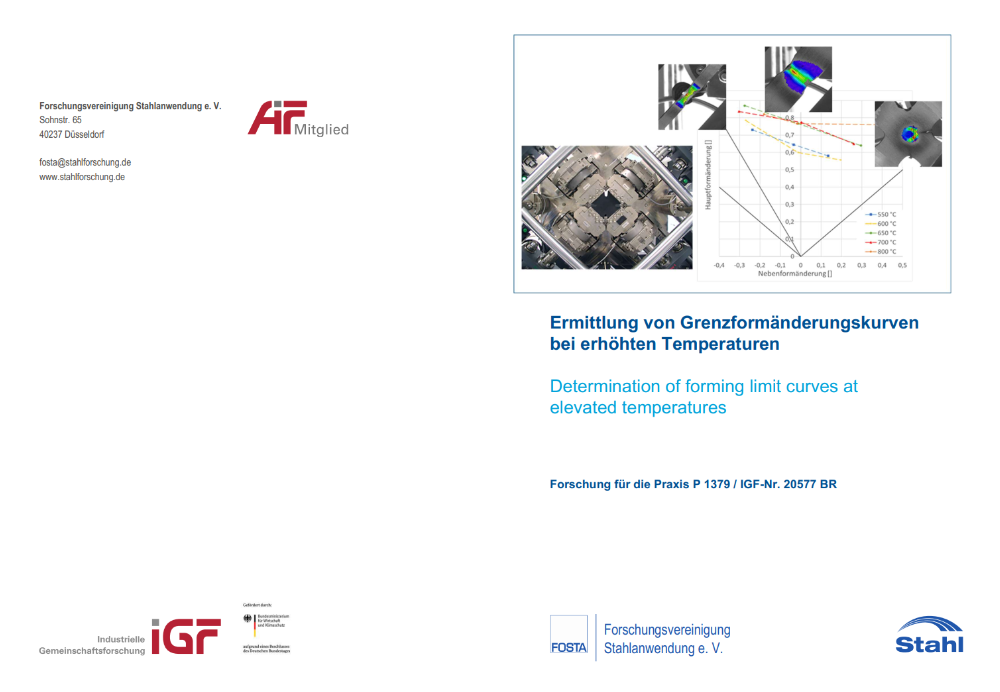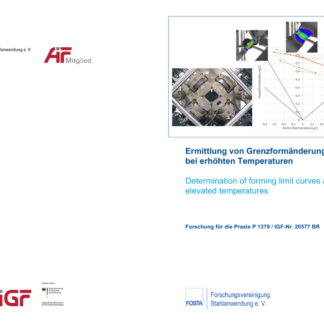Description
P 1379 – Determination of forming limit curves at elevated temperatures
The main objective of the project was to develop a new method for frictionless determination of forming limit curves for hot forming processes. Based on an extensive patent and literature research, test concepts and possible specimen geometries were determined. Using an existing biaxial tensile testing machine, new specimen shapes reflecting the uniaxial tensile load, the plane strain load and the equibiaxial tensile load, the three essential points of the FLC, were to be developed with the help of numerical simulations. Two manganese boron steels were selected for the investigations, the standard material 22MnB5 and the new material 34MnB5. First, the material behaviour was determined temperature and strain rate dependent in the high-speed tensile test and transferred into material cards for LS-DYNA. Based on this, the numerical design of the test process and the specimen shapes for the uniaxial tensile load, the plane strain load and the equibiaxial tensile load were carried out in parallel. New clamping jaws and inductive heating of the specimens were integrated into the biaxial tensile testing machine. The measurement concept consisting of optical local strain measurement and temperature measurement was checked and validated. Subsequently, experimental investigations were carried out to determine friction-free temperature-dependent forming limit curves in the temperature range of 550°C – 800°C and their validation in the punchbound Nakazima test at 500 °C tool temperature. The results of the tests show that a friction-free determination of the forming limit curve at different temperatures is possible.
Finally, the results were verified experimentally and numerically on the demonstrator component “B-pillar base”. The benefits of the research results for steel applications are particularly relevant to companies in the toolmaking and automotive industries and their suppliers. They will be directly supported by more exact characteristic values for press-hardenable steels for the numerical design of sheet metal hot forming processes. Automotive manufacturers and their suppliers will be able to carry out the component design and subsequently the process design in a shorter period of time and with a more robust process window with the exact characteristic values, which will lead to lower manufacturing costs and thus secure the market position of these companies.
Tooling companies also benefit from knowing the exact failure behaviour of the presshardenable steels. This makes it possible to realise more robust and cost-effective tool technologies for processing these materials, which reduces the effort required for setting up and adapting the hot forming tools. In addition, greater process reliability means fewer cost, schedule and quality problems.
All research reports in german language only!
Published in:
June 2022
Authors:
Prof. Dr.-Ing. M. Dix, Dr.-Ing. R. Müller


